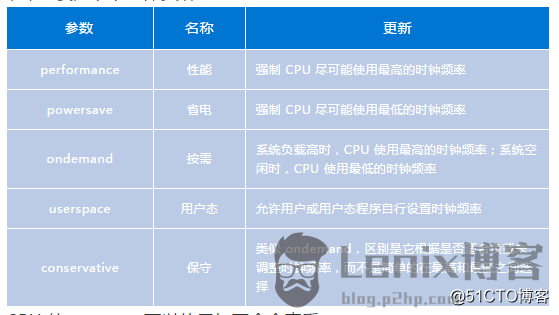Introduction to uned
For ordinary users, it is more difficult to optimize the Linux application environment. There are many fields and a wide range: parameters involved in CPU, storage, cache strategy, memory management, etc. Although there are default settings in Linux, which can deal with most scenarios, but for some special scenarios, such as high-performance, high-concurrency and high-availability systems, we need to make adjustments. The tuned feature introduced in this article is a commonly used tuning feature on Linux systems.
The tuned feature consists of two programs, tuned and tuned-adm. Among them, tuned is the server program, which is used to monitor and collect data of each component of the system; tuned-adm is the client program, which manages and configures tuned by the command line.
Tuned provides some pre-configured optimization strategies (profiles) for direct use, such as: virtual machine-host, virtual machine-guest, energy saving and other optimization scenarios. Of course, different systems and application scenarios have different optimization schemes, and tuned pre-configured optimization strategies may not always meet the requirements. Therefore, tuned also allows users to create and customize new tuning schemes.
The BC-Linux operating system of China Mobile Software currently supports the tuned feature and uses it for tuning.
tuned subsystem
The tuned subsystems run independently of each other and cooperate to form a tuned tuning scheme. Each subsystem can support multiple devices (each device may have multiple CPUs, network cards, etc.), and each device can be controlled using a separate instance.
CPU
The CPU subsystem mainly implements two functions:
1. Set the value of the CPU governor to the value of the “governor” parameter in the configuration file; the CPU governor is the CPU frequency manager of the kernel, and adjusts the frequency of the CPU through parameters, mainly the following parameters:

The governor of the CPU can be viewed with the following command:
# cpupower –cpu all frequency-info –governors
View currently supported governors
# cpupower –cpu all frequency-info –policy
View the governors in use
2. Dynamically adjust PM QoS CPU DMA delay according to CPU load. When the CPU load falls below the “load_threshold” parameter, the delay is set to…
The post Linux performance tuning dry goods, [dry goods sharing] detailed explanation of the tuned feature of Linux performance tuning first appeared on Lenix Blog .
This article is reprinted from https://blog.p2hp.com/archives/9719
This site is for inclusion only, and the copyright belongs to the original author.